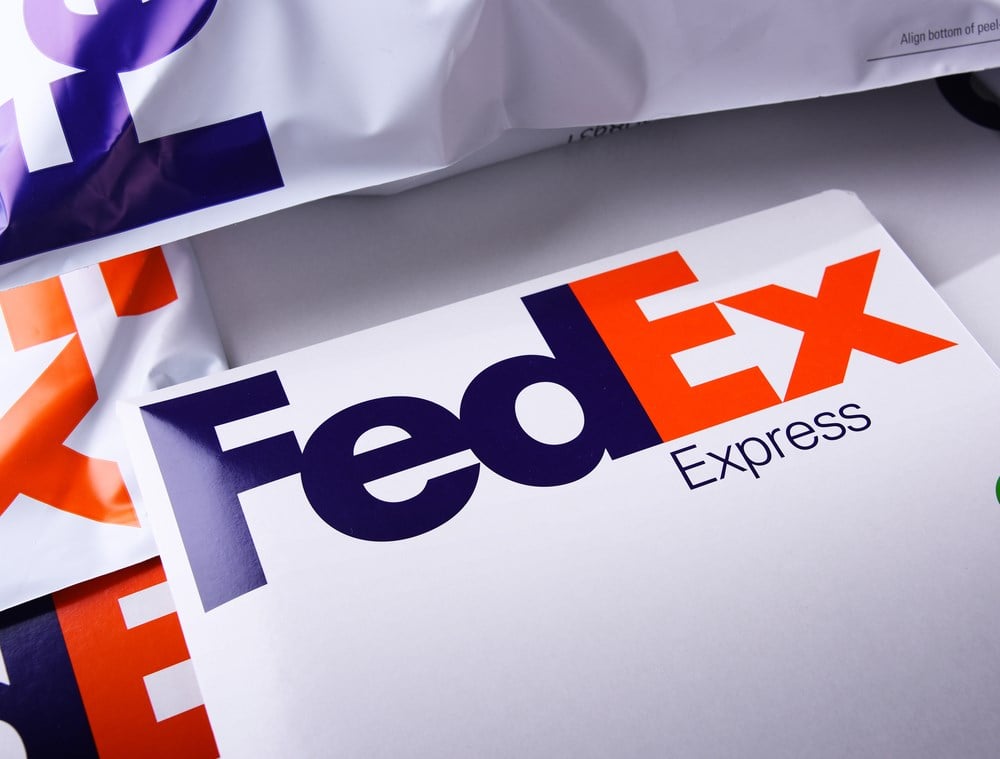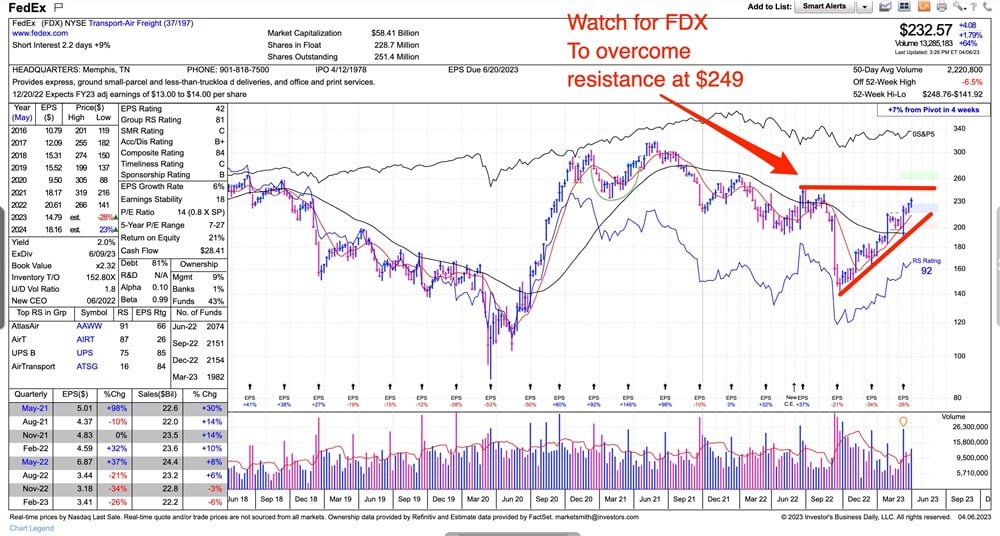FedEx Takes Flight; Analysts See More Gains Ahead FedEx gets a boost from a restructuring to drive efficiencies, as well as a dividend increase. Eight analysts raised their price target or upgraded the stock.
By Kate Stalter
This story originally appeared on MarketBeat

FedEx Corp. (NYSE: FDX) delivered for investors on April 6, with shares flying 1% higher, driven by heavier-than-normal trading volume.
The price move followed the company's announcement at an investor's event that it would consolidate its operating units into one organization. The idea is to create efficiencies, which is corporate speak for cutting costs. The company earlier said it would lay off 10% of its officers and directors, and it also took measures, including slashing the number of flights and reducing office space. It's also been cutting back on Sunday deliveries.
Dividend Increase
At the April investor's event, FedEx also announced a 10% increase in its dividend, or $0.44 per share, to $5.04 per share for fiscal 2024. The board declared a quarterly cash dividend of $1.26 per share, payable to shareholders of record at the close of business on June 12.
The company tends to increase its dividend yearly, although it held it steady in 2020, but has increased it since then.
Even before the announcement about business consolidation, FedEx had already been on a roll recently, with the stock advancing 10.52% in the past month and 27.47% in the past three months. A glance at FedEx's chart shows you both the longer trend higher, which began in September, and the more recent rally, which started after the company's better-than-expected third-quarter report.
As reported in MarketBeat in March, FedEx has been extended from its most recent buy point, and would-be investors should avoid chasing the stock higher. Any rally will, at some point, pull back as those who bought earlier pocket some profits. A pullback with support at a moving average can offer a new buy opportunity, as can a breakout from a new base.
Phased Transition
The planned transition, with full implementation expected in June 2024, will bring FedEx Express, FedEx Ground, FedEx Services, and other FedEx operating companies into Federal Express Corporation, becoming a single company operating a fully integrated air-ground network under the FedEx brand. FedEx Freight will continue to provide less-than-truckload freight transportation services as a stand-alone company.
Wall Street is clearly onboard. Immediately after the announcement, eight analysts either boosted their price target on FedEx or upgraded the stock, as MarketBeat data show. The consensus estimate is "moderate buy," with a price target of $241.41, representing a 3.87% upside.
While that consensus price target may seem puny, given the enthusiasm over the company, keep in mind that the stock will inevitably pull back after this advance, which could set the stage for a fresh run-up.
Analysts are expecting FedEx to post an earnings decline this year, to $14.79 a share. Growth is seen rebounding next year, to $18.16 a share, up 23%.
The rate of revenue growth began steadily dropping in mid-2021; in the past two quarters, year-over-revenue declined by 3% and 6%, respectively.

Steady Price Appreciation
The recent upside trajectory is encouraging, and you can easily draw a trend line to show the price progress over the past six months, as the stock traveled north, along its 10-week moving average.
Although FedEx has a long way to go before reaching its May 2021 all-time high, a more relevant area of resistance occurred more recently, in late June 2022, when the stock repeatedly hit resistance just below $249.
Watch for the stock to surpass that point in the coming months, although as noted above, don't be surprised to see a moving-average pullback or even a new base first.
Rival Also Sees Revenue Declines
Of course, any discussion of FedEx invites comparison to rival United Parcel Service Inc. (NYSE: UPS). UPS has been the better earnings grower in the past two years, although it's seen a similar pattern of revenue declines.
A glance at UPS' chart shows it's been consolidating since a breakout attempt fizzled a year ago, although the stock has been gradually trending higher recently. It advanced 9.88% in the past three months.










